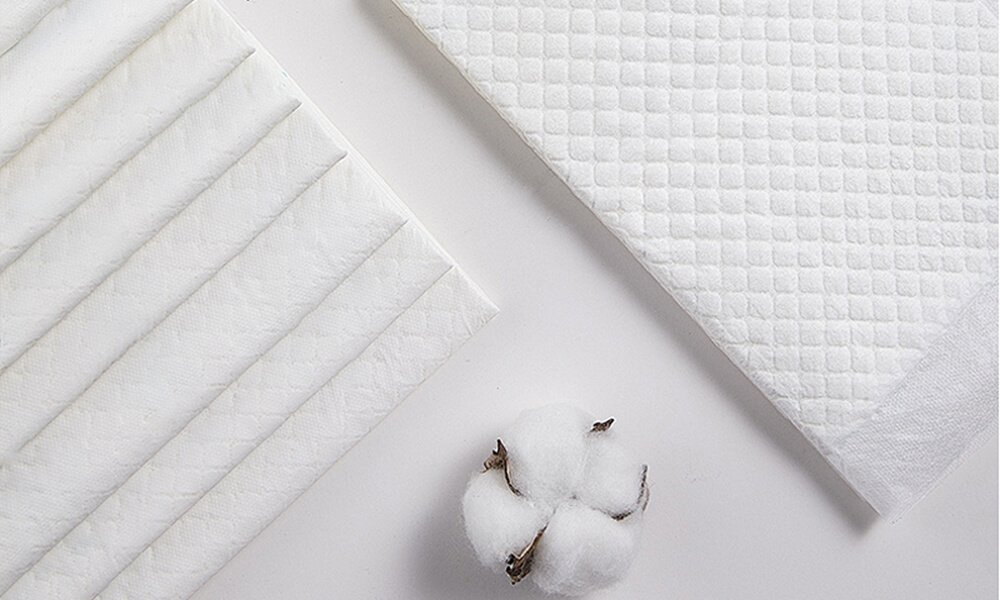Πίνακας περιεχομένων
Introduction to the Disposable Bed Pad Industry
Significance in the Healthcare Sector
Disposable bed pads have become indispensable in healthcare facilities, providing essential support to patients with various medical conditions. They are important in maintaining hygiene and patient comfort, especially in managing incontinence. The increasing aging population and prevalence of medical conditions requiring such care have significantly boosted the demand for disposable bed pads. They are instrumental in infection control and maintaining patient dignity, making them vital to healthcare services.
Overview of Market Growth and Potential
The disposable bed pad industry is experiencing robust growth, driven by the expanding healthcare sector worldwide. This surge in demand is evident not only in established markets but also in emerging economies, where healthcare standards are progressively improving. The industry also benefits from technological advancements in materials and manufacturing processes, enhancing efficiency and cost-effectiveness. The growing awareness of hygiene and healthcare needs positions this market segment for substantial future growth and investment opportunities.
Evolution of Bed Pads: From Cloth to Disposable
Historical Perspective
Transitioning from traditional cloth pads to disposable bed pads marks a significant evolution in healthcare and hygiene. Cloth pads, requiring regular laundering, were less efficient in absorbency and odor control. The shift to disposables represents a critical advancement in healthcare, driven by the need for more hygienic, convenient, and effective solutions.
Advancements Leading to Disposables
Breakthroughs in material science and manufacturing technologies accelerated the move toward disposable bed pads. Introducing superabsorbent polymers and improvements in non-woven fabrics transformed the industry, resulting in products that offer superior absorbency, are lightweight, and enhance patient comfort.
Material Insights: Components of Disposable Bed Pads
Analysis of Materials Used
Disposable bed pads typically consist of multiple layers designed for a specific function. The top layer is a soft, non-woven fabric for comfort and quick fluid absorption. The core contains superabsorbent polymers within fluff pulp, providing effective absorbency. The bottom layer is usually waterproof, preventing fluid leakage and safeguarding bedding and furniture.
Role of Superabsorbent Polymers
Superabsorbent polymers (SAPs) are at the core of disposable bed pads and are responsible for their exceptional absorbency. These polymers can soak up their weight in liquid several times, converting it into a gel and preventing leakage. This feature is pivotal for the pads’ functionality, offering a dry and comfortable user experience and driving ongoing research and development in the industry.
Manufacturing Process: A Step-by-Step Guide
Detailed Description of Production Stages
The manufacturing process of disposable bed pads involves several key stages. It starts with preparing raw materials like non-woven fabrics and fluff pulp combined with superabsorbent polymers. These layers are then bonded together using thermal or ultrasonic bonding methods to form a cohesive structure. The final steps involve cutting the pads to size, packaging, and preparing them for distribution.
Integration of Technology in Manufacturing
The manufacturing process of disposable bed pads heavily incorporates technology for efficiency and quality assurance. Automation and advanced machinery ensure consistent product quality, while technology aids in quality control, detecting and correcting defects. This technological integration enhances production capacity and guarantees that the pads meet the rigorous standards required in healthcare environments.
Innovations in Bed Pad Design
Recent Design Improvements
Continuous innovation is a hallmark of the disposable bed pad industry. Recent developments include thinner, more absorbent pads with added features like odor control and wetness indicators. These innovations improve the product performance and enhance user comfort and ease of use.
Impact on User Experience and Functionality
The advancements in bed pad design significantly enhance the user experience. Improved absorbency and odor control provide greater comfort and dignity, particularly for users with incontinence issues. Features like wetness indicators aid caregivers in timely pad changes, enhancing patient care and reducing skin-related complications.
Quality Assurance in Manufacturing
Μέτρα ελέγχου ποιότητας
In manufacturing disposable bed pads, quality assurance is paramount, given their healthcare application. Manufacturers employ rigorous quality control measures throughout production, testing for absorbency, durability, and skin compatibility. Consistent quality control is crucial to ensure every batch of bed pads meets the required safety and performance standards.
Importance of Maintaining Industry Standards
Compliance with industry standards is crucial for disposable bed pad manufacturers. These standards, set by regulatory bodies and healthcare institutions, ensure product safety and effectiveness. Adherence to these standards safeguards users and bolsters the manufacturers’ credibility and reputation in the healthcare market.
Environmental Considerations and Sustainability Efforts
Environmental Impact of Disposable Bed Pads
The environmental footprint of disposable bed pads, particularly in terms of waste generation and resource consumption, is a significant concern. As single-use items, they contribute to medical waste, and their production requires substantial resources like water and energy.
Sustainable Practices in the Industry
In response to environmental challenges, the industry is adopting sustainable practices. Efforts include:
- Using recycled and biodegradable materials.
- Optimizing production processes for reduced waste and energy use.
- Implementing recycling initiatives.
These practices minimize the environmental impact and align with increasing consumer demand for sustainable healthcare products.
Market Dynamics: Trends and Consumer Behavior
Analysis of Current Trends
Various trends shape the disposable bed pad market, including the growing focus on home healthcare and increased healthcare spending. There’s a rising preference for products offering enhanced comfort and convenience, spurring product design and materials innovations.
Understanding Consumer Needs and Preferences
For manufacturers, understanding consumer needs and preferences is vital. This involves catering to the diverse requirements of different user groups, such as the elderly, post-operative patients, and maternity care. Balancing functionality, comfort, and affordability is key to meeting these varied needs effectively.
Global Regulatory Landscape and Compliance
Overview of Regulations Across Different Countries
The regulatory landscape for disposable bed pads varies globally, with differing safety, performance, and labeling standards. Manufacturers must navigate these regulations for compliance, especially in international markets.
Challenges of Compliance in Diverse Markets
Compliance in varied markets presents challenges, requiring adherence to specific material, production, and packaging standards. Non-compliance risks penalties and brand reputation damage, necessitating investment in regulatory expertise and compliance strategies.
Challenges and Opportunities in Manufacturing
Exploration of Current Industry Challenges
The industry faces challenges like cost pressures, competition, and the necessity for continual innovation. Manufacturers also grapple with environmental concerns and complex regulatory environments, affecting production and market access.
Opportunities for Growth and Innovation
Despite these challenges, opportunities for growth and innovation abound. Developing new materials and designs, entering emerging markets, and leveraging technology for manufacturing improvements are key. Collaborations and partnerships also present new development and market expansion possibilities.
Technological Advancements and Future Outlook
Emerging Technologies in Manufacturing
Technological advancements are defining the future of disposable bed pad manufacturing. Advanced materials, automation, and data analytics enhance production efficiency and quality. Innovations in biodegradable and smart materials offer exciting prospects for product development.
Predictions for the Future of the Industry
The disposable bed pad industry is poised for significant transformations. Continued technological advancements, growing environmental consciousness, and evolving healthcare needs will shape the industry’s future. The emphasis on sustainability, user comfort, and regulatory compliance will continue to drive innovation and market growth.

